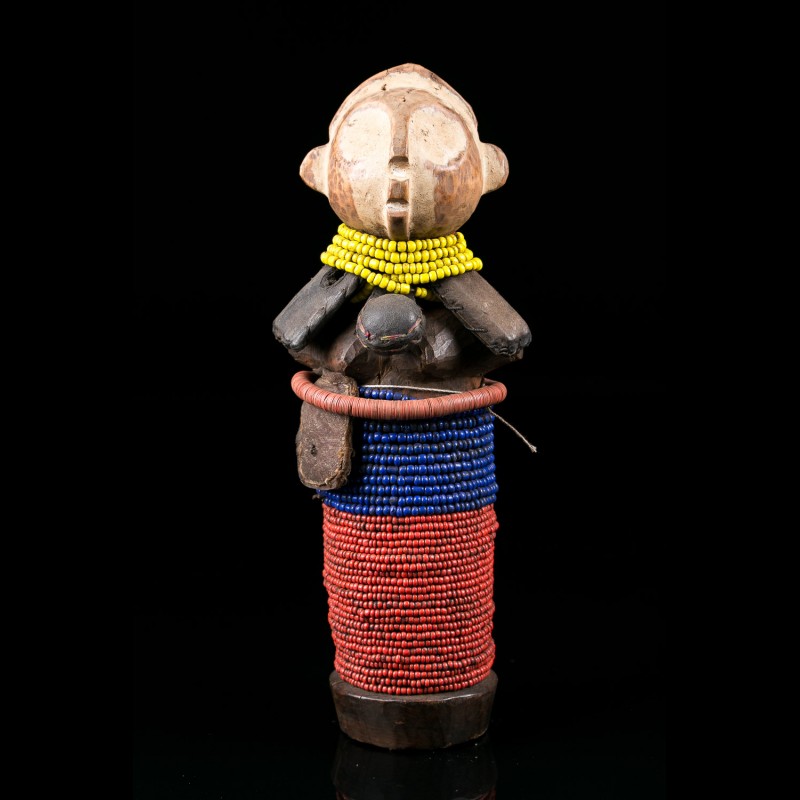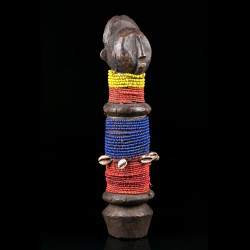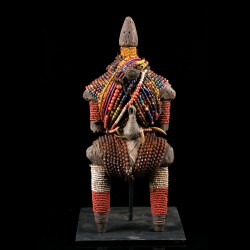








The Sukuma is the largest culture in Tanzania. The Sukuma live in small villages in Usukuma located west and south of Lake Victoria and 100 miles south of the equator. Because it rains from September through October and from February through May, the Sukuma are predominantly peaceful farmers. The Sukuma speak Kiswahili and Kisukuma (the official Sukuma language) and since the 16 th century they have traded with Baganda tribes and since 1845 the Arabs. The English discovered Usukuma in 1857. The German East African Company colonized what was to become Tanganyika and exploited the Sukuma for economic gain and governed under tight military control and force. The Germans were forced out during WWI and in 1918 Tanganyika was taken over by British who had colonized Kenya and Uganda. The Sukuma believe in a creator-god and pray for rain for crops and are land-oriented. They believe in eternal spirits of ancestors and are ruled by chiefs and the superstitions and wisdom of medicine men. Sukuma puppets are used to please ancestors during rites of passage ceremonies, rituals in praise and honor of ancestors (to please) and in the people's feast and dances called ma shunda Na mbing ga Batemi. As elders dance with ancestor puppets, they believe ancestor spirits will bring forth through magical powers the rain, food and wellbeing.These Sukuma dance puppets have a fine patina and show considerable age. It is unusual to find them with beadwork at the neck and feet, a symbol of female (mother) and male (father) ancestors (probably parents of the person who carved the statues). The long torsos, short arms, cut-off feet (the ancestors can no longer walk because they are spirits) and blank facial expressions (spirits are not expressive) are typical of 19 th and early 20 th century Sukuma art. The “shiny” wood area is where the dancer held the puppets.SpecsOriginEx private collection BelgiumSize28 x 8 cmDatingCirca 1960Material(s)Wood
Data sheet

The Sukuma is the largest culture in Tanzania. The Sukuma live in small villages in Usukuma located west and south of Lake Victoria and 100 miles south of the equator. Because it rains from September through October and from February through May, the Sukuma are predominantly peaceful farmers. The Sukuma speak Kiswahili and Kisukuma (the official Sukuma language) and since the 16 th century they have traded with Baganda tribes and since 1845 the Arabs. The English discovered Usukuma in 1857. The German East African Company colonized what was to become Tanganyika and exploited the Sukuma for economic gain and governed under tight military control and force. The Germans were forced out during WWI and in 1918 Tanganyika was taken over by British who had colonized Kenya and Uganda. The Sukuma believe in a creator-god and pray for rain for crops and are land-oriented. They believe in eternal spirits of ancestors and are ruled by chiefs and the superstitions and wisdom of medicine men. Sukuma puppets are used to please ancestors during rites of passage ceremonies, rituals in praise and honor of ancestors (to please) and in the people's feast and dances called ma shunda Na mbing ga Batemi. As elders dance with ancestor puppets, they believe ancestor spirits will bring forth through magical powers the rain, food and wellbeing.These Sukuma dance puppets have a fine patina and show considerable age. It is unusual to find them with beadwork at the neck and feet, a symbol of female (mother) and male (father) ancestors (probably parents of the person who carved the statues). The long torsos, short arms, cut-off feet (the ancestors can no longer walk because they are spirits) and blank facial expressions (spirits are not expressive) are typical of 19 th and early 20 th century Sukuma art. The “shiny” wood area is where the dancer held the puppets.SpecsOriginEx private collection BelgiumSize28 x 8 cmDatingCirca 1960Material(s)Wood


